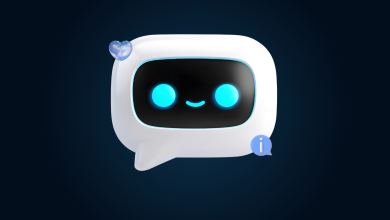For centuries, physics has been the ultimate quest to understand the universe — from the movement of galaxies to the quantum behavior of particles. Yet even the most powerful equations have their limits. The deeper we delve into dark matter, quantum entanglement, or the unification of forces, the more complex the questions become. Enter artificial intelligence (AI) — a technology once confined to data analysis and automation, now emerging as one of the most powerful tools in the physicist’s toolkit.
Today, AI isn’t just helping scientists calculate faster; it’s helping them think differently. Machine learning models are uncovering patterns in data that defy intuition, optimizing simulations that were once impossible, and even proposing entirely new physical laws. The partnership between human curiosity and machine intelligence is reshaping how we understand reality itself.
How AI is Transforming the Way Physics Is Done
AI’s influence on physics isn’t a distant promise — it’s already happening in labs and research centers around the world. Traditionally, physicists rely on theory-driven approaches: build an equation, test it, refine it. But many modern problems — such as understanding turbulent flow or simulating the early universe — produce data so vast and nonlinear that traditional mathematics can’t easily describe them.
Machine learning, especially deep learning, excels where complexity reigns. Neural networks can detect hidden relationships within massive datasets, effectively “learning” from patterns that would take humans years to identify. For instance, in quantum mechanics, AI models are being trained to predict the behavior of many-body systems — scenarios where every particle interacts with every other particle in ways too complicated to compute directly.
In astrophysics, AI systems are sorting through terabytes of telescope data, identifying celestial bodies, and even detecting gravitational waves faster than any human team could. These models aren’t replacing physicists; they’re accelerating discovery by automating the tedious and surfacing the extraordinary.
From Data Crunching to Discovery: AI’s New Frontier in Theoretical Physics
One of the most fascinating applications of AI is in theoretical physics, where it’s helping to derive or refine equations that describe the universe. Rather than simply fitting data, AI can now propose symbolic mathematical relationships — equations — that explain how systems behave.
This is a revolutionary shift. Traditionally, physicists developed equations based on intuition, symmetry, and experimentation. AI, however, can reverse-engineer equations directly from data. Symbolic regression algorithms have already been used to rediscover well-known laws, such as Newton’s second law of motion, using only experimental data as input.
But the potential goes further. AI could uncover new relationships that humans have never considered. In particle physics, where the Standard Model remains incomplete, deep learning models are being used to explore patterns in particle interactions that might point toward physics beyond the Standard Model. AI doesn’t get tired, doesn’t assume, and doesn’t cling to established paradigms — qualities that make it an ideal companion for discovery.
Supercomputing and Simulation: Where AI Meets Scale
Many of physics’ biggest mysteries depend on simulation — running models of galaxies, fluids, or subatomic particles at scales that push computing limits. This is where AI and high-performance computing (HPC) come together. Platforms that integrate AI with large-scale simulation environments are enabling scientists to achieve breakthroughs that would have been computationally prohibitive just a few years ago.
For example, turbulence modeling in fluid dynamics, which is essential for understanding weather systems and aerodynamics, has long been one of physics’ unsolved challenges. AI can approximate solutions in real time, dramatically reducing the computational resources required for accurate predictions. Similarly, in materials science, machine learning models can predict new compounds with desirable properties — from superconductors to energy-efficient materials — without exhaustive trial and error.
A great example of this synergy can be found in https://rescale.com/platform/ai-physics/, where advanced cloud-based computing platforms bring AI-driven physics simulations to the forefront of scientific research. By combining scalable infrastructure with intelligent automation, these platforms allow researchers to push the boundaries of what’s computationally possible, turning theory into testable reality faster than ever before.
Bridging Human Intuition and Machine Insight
While AI’s computational might is undeniable, it’s important to remember that physics is still driven by human creativity. Machines can process and predict, but they don’t wonder or imagine — not yet, anyway. The beauty of AI-assisted physics lies in this collaboration: AI handles the complexity, while humans interpret meaning.
For instance, when a neural network identifies an unexpected anomaly in particle collision data, it’s up to physicists to ask why it’s there. When AI models propose new equations, scientists must validate and contextualize them within the broader framework of known physics. This back-and-forth dynamic — between human reasoning and machine computation — is redefining how scientific breakthroughs are achieved.
It’s not that AI replaces theoretical insight; rather, it amplifies it. With tools that can test thousands of hypotheses simultaneously, researchers can focus their mental energy on the most promising leads. AI becomes an intellectual multiplier, enhancing both creativity and efficiency.
Challenges and Ethical Considerations
As with any technological revolution, AI’s integration into physics raises questions. One of the most significant challenges is interpretability — understanding why an AI model makes certain predictions. In physics, unlike in marketing or healthcare, it’s not enough for an algorithm to be accurate; it must also be explainable. Physical laws must be interpretable, not just numerically precise.
There’s also the risk of overreliance. If researchers lean too heavily on AI-generated insights without rigorous validation, they could draw conclusions unsupported by underlying theory. Maintaining scientific rigor in the age of AI requires careful balance — embracing computational power without abandoning the principles that define good science.
Furthermore, access to high-performance AI infrastructure remains uneven. While large institutions and national labs can deploy massive AI-physics systems, smaller universities or independent researchers may struggle with limited resources. Democratizing access to AI-powered tools will be essential to ensuring that progress benefits the entire scientific community.
A New Era of Discovery
The partnership between AI and physics represents more than just technological advancement — it’s a philosophical shift. For the first time, machines are not merely assisting in discovery; they are participating in it. They are helping us decode patterns too intricate for the human mind and simulate universes too vast for human comprehension.
As AI continues to evolve, we may find that the next major physics revolution — whether it’s a theory of quantum gravity or a complete model of dark energy — won’t come from a lone genius at a blackboard but from the collaboration between human insight and machine intelligence.
Beyond the equations, beyond the data, this is what defines the future of physics: an era where curiosity meets computation, and together they unravel the mysteries of the universe one algorithm at a time.



